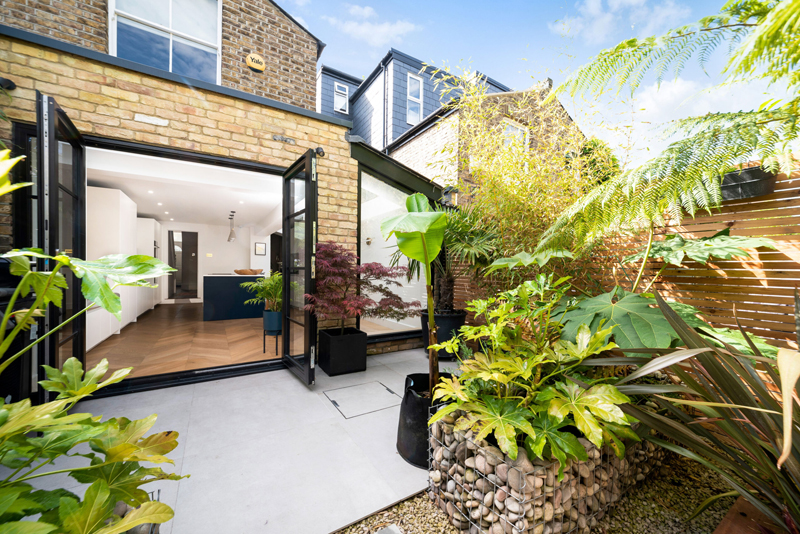Loft conversions have become one of the most popular ways for homeowners in the United Kingdom to maximise their property’s potential without the need to move. With rising property prices and limited space in many urban and suburban areas, transforming an underused attic into a functional, habitable area offers an appealing solution.
Not only does a loft conversion increase the usable square footage of a home, but it can also significantly enhance its overall value. Many homeowners choose to turn their lofts into bedrooms, offices, play areas, or even en-suite bathrooms, tailoring the space to their needs.
The flexibility and practicality of this home improvement have made it an attractive option across the UK, particularly in cities like London, Manchester, and Birmingham, where space is at a premium.
The process of converting a loft involves several steps, beginning with a thorough assessment of the existing structure. Homeowners often start by consulting with architects or specialist loft conversion companies to identify the most suitable type of conversion, whether it be a dormer, Velux, or mansard style.
Each variation offers different benefits in terms of head height, natural light, and overall aesthetic. A comprehensive survey is essential to evaluate the load-bearing capacity of the existing roof and floor, ensuring that the conversion complies with safety standards and building regulations.
Planning permission is typically not required for standard loft conversions, but this depends on specific circumstances such as the property’s location, whether it’s a listed building, or if the conversion involves significant alterations that impact the roofline.
Funding a loft conversion is another key consideration for UK homeowners. Costs can vary widely depending on factors like the size of the space, type of conversion, materials used, and any additional features such as new windows or insulation. On average, the expense can range from £20,000 to £60,000, with more complex projects costing even more.
Many homeowners choose to finance their conversions through savings, remortgaging, or specialized home improvement loans. Given the increase in property value often associated with converting a loft, many see this expenditure as a worthwhile investment. It’s important to work closely with reputable contractors and obtain multiple quotes to ensure the project is completed within budget and on time.
The benefits of loft conversions extend beyond increased living space. They can improve energy efficiency by adding insulation and sealing gaps, potentially reducing energy bills. A well-designed loft can also significantly boost a home’s curb appeal, making it more attractive to potential buyers should the owner decide to sell in the future.
Additionally, converting a loft often adds a touch of individuality and sophistication to a home, especially when designed with a contemporary aesthetic or clever use of natural light. Overall, a loft conversion is an excellent way for UK homeowners to optimise their property’s potential, marry practicality with style, and create an inspiring new space that meets their evolving needs.
In the UK, building regulations and planning laws play a crucial role in loft conversion projects. While most minor conversions typically fall under permitted development rights, it’s essential for homeowners to check with their local planning authority before beginning work. This ensures the conversion adheres to safety standards and local rules, avoiding costly delays or legal issues.
Contractors are often familiar with these regulations and can handle the necessary applications on behalf of the homeowner. Maintaining clear communication and understanding of the planning process helps safeguard the project from unexpected complications.
One common challenge faced during loft conversions in the UK is the impact on neighbouring properties, especially in densely populated areas. Homeowners must consider privacy, overlooking issues, and possible noise disturbances.
Careful planning and designing the conversion with features such as strategic window placement and soundproofing can mitigate these concerns. Furthermore, some homeowners opt for eco-friendly solutions during the conversion, such as solar panels, sustainable insulation materials, or energy-efficient windows. These additions not only lessen the environmental footprint of the property but can also bring long-term savings on energy costs.
Ultimately, a loft conversion in the United Kingdom presents a practical, valuable investment for homeowners seeking to enhance their living environment. Whether it’s creating a quiet retreat, a vibrant entertainment space, or a functional workspace, transforming an attic into a useful and attractive part of the home can dramatically improve quality of life.
From initial planning and budgeting to construction and finishing touches, the journey requires careful coordination and adherence to regulations. But the rewards, both in terms of increased space and property value, make loft conversions an increasingly popular choice across the UK’s diverse housing landscape.
Feasibility
Assessing the feasibility of a loft conversion is a crucial first step for UK homeowners considering this ambitious project. It involves a detailed evaluation of the existing structure, including roof type, available space, and the building’s overall condition.
Homeowners should consult with architects or specialist loft conversion firms who can carry out structural surveys. These assessments determine whether the roof can support a conversion, identify potential obstacles, and suggest the most effective design solutions. Factors such as the height of the roof, headroom clearance, and access points all influence the potential of the project.
Additionally, local planning restrictions, conservation area considerations, or listed status may impact feasibility, requiring approval or special permissions. Cost estimates and timelines are also part of the feasibility evaluation, helping owners determine if the project is financially viable and fits within their schedule. Ultimately, a professional assessment ensures the conversion will be both technically possible and worthwhile, preventing costly mistakes and surprises down the line.
Types of Loft Conversions
In the UK, there are several common types of loft conversions, each suited to different property structures and homeowner needs. The most straightforward is the *Velux* or rooflight conversion, which involves installing large skylight windows and minimal structural work.
It offers a cost-effective way to add extra space, typically suitable for homes with adequate height. The *Dormer* conversion extends vertically from the roof, creating additional headroom and usable floor space. Dormers are popular due to their versatility and ability to blend seamlessly with various roof styles. The *Mansard* conversion involves substantially altering the roof’s slope, creating a nearly full-height room with a flat roof on top.
It’s more complex and costly but provides maximum space and natural light. Lastly, *Hip-to-Gable* conversions modify hipped roofs into gable ends, increasing usable space and height—ideal for semi-detached properties. Choosing the right type depends on the existing roof structure, budget, desired aesthetics, and planning permissions. Consulting with specialists ensures the best fit for each property’s unique features.
Roof Window Conversion
A roof window conversion is one of the simplest and most cost-effective ways to add natural light and ventilation to an attic space in the UK. This type of loft conversion typically involves installing one or more large roof windows, such as Velux windows, into the existing roof.
It is ideal for homeowners seeking to create a bright, airy room with minimal structural adjustments. Roof window conversions are particularly suitable for small conversions like walk-in closets, home offices, or additional storage areas. Because they don’t usually require extensive changes to the roofline, these conversions often do not need planning permission, making them a quick and straightforward project.
However, while they are economical and efficient, roof window conversions may be limited in terms of space and headroom, meaning they might not be suitable for larger bedrooms or en-suite bathrooms without further modifications. Proper insulation, weatherproofing, and safety measures are crucial during installation to prevent leaks and heat loss.
Overall, a roof window conversion is an excellent choice for adding light and ventilation to existing attic spaces, creating a more pleasant and functional area without major renovations.
Dormer Conversion
A dormer conversion is one of the most popular and versatile types of loft conversions in the UK. It involves constructing a vertical window extension that projects from the sloped roof, creating additional headroom and floor space inside the attic.
Dormers can come in various styles—flat, pitched, hipped, or gable-ended—allowing homeowners to tailor the look to match their property’s architecture. This conversion type is especially suitable for homes with limited existing headroom, as it significantly increases usable space and makes the loft suitable for bedrooms, bathrooms, or living areas.
The process involves extending the roof structure and installing windows to bring in daylight. Because dormer conversions often require more extensive roof alterations, they tend to be more complex and costly than simple roof window installations.
Nonetheless, they provide a substantial increase in usable space, improve natural light, and often enhance the property’s aesthetic appeal. Planning permission is typically required, especially for larger or prominent dormers, but it offers a flexible and functional solution for many UK homes seeking to make the most of their lofts.
Mansard Loft Conversion
A Mansard loft conversion is a significant and transformative way to maximize space in a UK property. This type of conversion involves drastically altering the roof’s slope—sometimes replacing the existing roof with a new, nearly vertical wall and a flat roof on top.
The result is a dramatic increase in head height and usable floor space, often allowing for multiple rooms or a large, open-plan layout. Mansard conversions are ideal for properties where the existing roof structure permits substantial modification, particularly in terraced or semi-detached homes. Because of the extensive work involved, including rebuilding parts of the roof structure, it is a more costly option compared to simpler conversions like dormers or Velux.
This style is especially popular in conservation areas or for homeowners seeking a more modern or contemporary look. The flat roof section provides space for installing features like solar panels, roof gardens, or terraces. A key advantage of Mansard conversions is their ability to significantly increase the value of a property. However, they require detailed planning, often necessitating planning permission due to their substantial structural changes, and must comply with building regulations.
Hip-to-Gable Loft Conversion
A hip-to-gable loft conversion is a clever solution for semi-detached and end-of-terrace houses with hipped roofs, which slope inward on all sides. This type of conversion involves altering the roof’s slope on the side to create a gable end, effectively straightening the roof line and increasing the available space inside. This conversion is particularly effective in boosting headroom and floor area without expanding the footprint of the property.
The process typically involves extending the side of the roof while stabilising the existing structure, making it a practical option for homes with limited land space. It’s often paired with a rear dormer to optimise interior space further. Since it modifies the roof’s profile rather than the entire structure, a hip-to-gable conversion can be more affordable and less disruptive than a full Mansard. Planning permission is usually required, especially in conservation areas or for listed buildings. This type of conversion offers a valuable way to add significant space to a property while maintaining its aesthetic integrity, making it a popular choice in the UK’s suburban housing stock.
Hipped-Roof Conversion
A hipped-roof conversion is an effective way to maximise space in homes with hipped roofs, which slope on all four sides. This type of loft conversion involves converting the existing hipped roof into a gable-end or extending the roof to create additional headroom and floor space.
It’s particularly suitable for semi-detached and detached houses where the roof’s structure limits natural room height and usability. The main advantage of a hipped-roof conversion is that it allows homeowners to significantly increase their living space without expanding the building’s footprint, making it a popular choice in the UK’s suburban areas.
The process typically involves structural modifications, including raising the roof or extending it to form a gable end, often combined with the addition of dormer windows – a *hip-to-gable dormer*—to enhance light and space. Because this conversion alters the roof’s design, planning permission may be required, especially in conservation areas or on listed buildings.
Costs can vary based on the size and complexity but are generally more affordable than a full Mansard conversion. A hipped-roof conversion offers an excellent balance of space augmentation and aesthetic preservation, providing homeowners with a practical and attractive solution to add value and functionality to their homes.
Gambrel Conversion
A gambrel conversion features a distinctive barn-style roof with two different slopes on each side—steeper on one and more gradual on the other—creating more internal headroom and usable space. This style is less common but highly effective in maximising attic space in properties where traditional roof designs limit height. Gambrel roofs are often associated with rural or barn conversions but can be adapted for residential homes in the UK aiming for a unique aesthetic.
Converting a gambrel roof into a livable space involves significant structural work, including reconstructing or reinforcing the roof framework to support the new design. This type of conversion is ideal for homeowners wanting to create spacious bedrooms, studios, or recreational areas while maintaining a distinctive architectural style.
Planning permission is generally required, especially if the modification changes the roofline or the external appearance. Gambrel conversions are more costly and complex than typical dormer or Velux styles but provide a highly spacious and visually striking outcome. They are perfect for those looking for a combination of character and practicality, transforming an attic into a truly impressive, expansive living space.
Velux Loft Conversion
A Velux loft conversion is one of the simplest and most affordable options for adding light and space to an attic in UK homes. This type involves installing large roof windows—commonly known as Velux windows—into the existing roof structure. It’s ideal for homeowners looking to create a bright, ventilated space such as a home office, guest room, or extra storage without extensive structural work.
Because Velux conversions generally do not require major modifications to the roofline or structure, they tend to be quicker and less costly than other types of conversions. They are also often classified under permitted development rights, meaning planning permission might not be necessary if certain conditions are met.
However, a Velux loft conversion offers limited headroom and may not be suitable if the space is intended for use as a bedroom or other functional rooms requiring more space. Proper installation demands good insulation and weatherproofing to prevent leaks and heat loss.
Overall, Velux conversions are an excellent choice for increasing natural light and ventilation in an attic quickly and cost-effectively, especially in properties where space constraints are less critical but light is a priority.
Building Control Regulations
Building control regulations are a fundamental aspect of loft conversions in the UK, designed to ensure the safety, energy efficiency, and structural integrity of the work undertaken. All major domestic conversions must comply with these regulations, which cover matters like fire safety, insulation, electrical wiring, ventilation, and structural strength. Homeowners are usually required to inform their local building control authority before starting work, or hire a certified approval body, ensuring the project adheres to legal standards.
It’s important to note that even if a conversion falls under permitted development rights, certain elements—such as changing structural components or installing new windows—must still meet building regulations. Failure to comply can lead to enforcement action or the need to undertake costly remedial work.
Engaging qualified professionals, such as certified builders or architects, helps ensure all aspects of the project meet legal standards, avoiding future issues. Adhering to building control regulations not only guarantees safety but also adds value and peace of mind for homeowners in the UK, knowing their newly converted loft is both compliant and well-constructed.
Structural Strengthening
Structural strengthening is a critical consideration in loft conversions, especially for older or traditionally built UK homes where the existing roof and floor may not support the additional weight of a converted attic. This process involves assessing the current load-bearing capacity of the roof, floors, and walls, and reinforcing them as necessary.
Common techniques include installing steel beams or supports, adding stronger joists, and reinforcing existing structural elements to ensure the safety and stability of the new space. In some cases, roof trusses may need to be replaced or enhanced to support insulation, new windows, and internal finishes.
Proper structural strengthening not only guarantees safety but also ensures compliance with building regulations. Working with experienced structural engineers and approved builders is essential for a successful and durable conversion. While this entails additional cost and planning, it provides peace of mind that the converted space is safe for everyday use and can support future modifications or furnishings.
Benefits
The benefits of a loft conversion in the UK extend far beyond simply increasing space. First and foremost, it maximizes the potential of underused attic areas, transforming them into functional, livable rooms tailored to the homeowner’s needs. This can significantly boost property value—often by around 20-30%—making it a wise investment, particularly in competitive property markets. Additionally, loft conversions can improve the energy efficiency of a home by adding insulation and sealing gaps, reducing heating costs.
They also offer flexibility; homeowners can create bedrooms, home offices, gyms, or entertainment areas, enhancing lifestyle quality. Plus, converting a loft can delay the need to move, saving the stress and expense of relocating. Finally, because loft spaces are often tucked away, they add privacy and tranquility, offering a peaceful retreat within the home. Overall, a well-designed loft conversion enhances both the functionality and attractiveness of a property, making it a smart choice for UK homeowners seeking to adapt their homes to modern needs.


